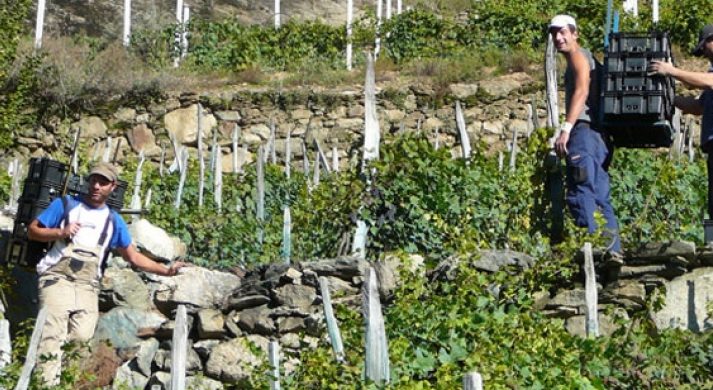The Sommelier's Box
Sandro Fay, ’il Glicine’ Valtellina Superiore Sassella 2019
- Regular price
- $50.00 USD
- Regular price
-
- Sale price
- $50.00 USD
- Unit price
- per
Couldn't load pickup availability
Region: Valtellina, Lombardy, Italy
Varietal: 100% Nebbiolo (Chiavennasca)
Tasting notes: Fay’s Sassella, called “Il Glicine” (“the wisteria”), is a beautifully polished wine that is aged in 500-liter French oak barrels, 20% of which are new. Although the grape (Nebbiolo) is the same, there’s no comparing this wine to anything from Barolo or Barbaresco, and there’s no need to—other than to say they are equally great. In the glass, it’s a translucent garnet-red, with aromas that make you feel like you’re picking berries in the woods: raspberry, black cherry, and cranberry scents are followed by an earthy wave of tobacco leaf, rose petals, fennel, sage, tar, leather, and black tea. It’s kind of a Gevrey-Chambertin/Barbaresco love child, unmistakably Nebbiolo in its mineral savor but floral, finessed, and more gently tannic than most Barolo/Barbaresco. Decant this very approachable ’19 about 30 minutes before serving in large Burgundy stems at 60 degrees (the cooler temperature will accentuate the aromatics and the fruit component).
Producer: In 1971, Sandro Fay began to invest in the redevelopment of his family’s small vineyard in San Giacomo di Teglio, a village within the Valtellina Superiore DOCG. By 1973, Fay had officially established the Azienda Agricola Fay and began to slowly expand the vineyard by incorporating additional plots of land, carefully selecting vineyards with different soil compositions and altitudes between 350 meters and 900 meters on steep mountain sides. Today Sandro’s children, Marco and Elena have taken up the family vineyards. Marco studied enology in Trentino and trained in Barolo. He translated those experiences when he returned to the terraced family vineyards and began producing single-vineyard wines of distinction united around the variety Chiavennasca, known outside of Valtellina as Nebbiolo.
Vineyard and Winemaking: Valtellina is the ultimate example of “heroic” viticulture, right up there in degree of difficulty alongside Côte-Rôtie in France, the Mosel River Valley in Germany, Ribeira Sacra in Spain. The vines of Valtellina, which sit in the shadow of the Rhaetic Alps along Italy’s border with Switzerland, aren’t merely “hillside” vineyards: Valtellina is a sheer rock wall with vines that cling to it for dear life. Hand-laid stone terraces keep everything from sliding down to the Adda River Valley below. Everything must be done by hand. Following in the footsteps of their father, siblings Marco and Elena Fay tend to 14 hectares (an impressive total for Valtellina) of vineyards across several different subzones. The soils in Valtellina are a highly variable, rocky mix of alluvial gravel, sand, granite, and limestone, since a lot of the material used to construct the terraces in the first place was hauled up from the banks of the river below. Because the Adda follows an East-West path, vineyards are planted only along the north bank, giving them full-south, all-day sun exposures in a climate that might otherwise be too cool to ripen grapes—especially the late-ripening Nebbiolo (called Chiavennasca in these parts). Just to the north are the snow-capped peaks of the Swiss Alps.
Share




